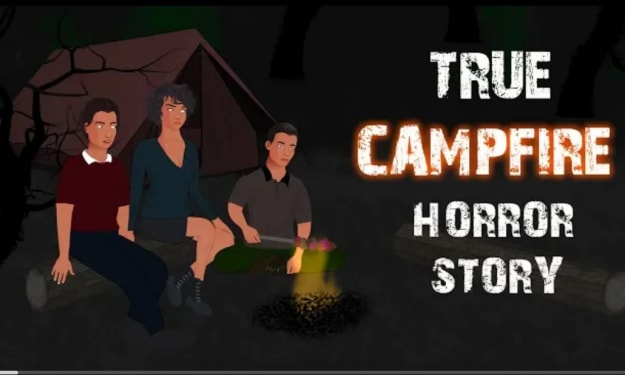Halloween: Origins and Traditions
A look at one of the oldest celebrations.

Halloween in the UK
The commercialisation of Halloween in the UK has happened in recent years. Certainly, it was never as popular as it is now, and it seems that retailers want to cash in on what has become an international celebration. Shops are full of mass-produced plastic goodies such as witches’ hats, bats, monster masks, giant spiders, face paints in so many colours… and much, much more. It is a stark difference from my 1980’s and 1990’s childhood where most British families frowned upon “Trick or Treating”. My family never missed an opportunity for a chance to dress up as a ghost or ghoul, so we were early adopters of this modern trend that had crossed the Atlantic. We would be taken out in the car to visit elderly friends and relatives, in exchange for a few sweets. It was something that my brother, my cousins, and I would look forward to and plan for what seemed like weeks. I did not realise how out-of-the-ordinary we were until I excitedly mentioned Halloween plans to a school friend, and I got admonished for lowering myself to the status of a common beggar. The word “evil” was also mentioned. I never spoke about Halloween at school again, and I even in adulthood, I have never discussed my path into Witchcraft with any of my childhood friends. Sometimes I wonder whether it is the great unspoken, that I have been a witch for 25 years, or whether they truly just don’t’ know.
In my adult life, Halloween, or Samhain (named after the Irish Gaelic month) has always been a special time where the madness of summer has ended, and the tranquillity of dark, cosy nights are upon us. My spiritual side wants to be free to explore whatever the darkness has to offer.
Where does Halloween originate?
The clue to the history of Halloween is in the Celtic word Samhain (pronounced Sow-wen or Sav-ven, depending on where in Ireland you are from). The word itself literally means Summers End. And to understand where the Halloween traditions come from, we must think about life the perspective of the average Celt.

Who were the Celts?
The Celts were tribes of people who originated in Europe and as far as modern-day Turkey (what was then called Anatolia). They were not one particular group of people, but a collection of tribes with cultural parallels, and similar religious traditions and beliefs. The earliest evidence of Celtic tribes in Europe dates their arrival at around 1200BC, but they were first documented by the Romans around 700BC and were called “Galli” or barbarians. The main areas that the Celts gained a stronghold was in the territories north of the Alps, stretching up through England, Wales, Scotland, and Ireland. Several other Celtic tribes, known as the Galatians, inhabited what is now modern-day Spain.
The importance of the Sun
To understand Halloween, we must appreciate the cyclical nature of life on Earth. The sun rose in the morning and set at night. It rose higher in the sky during Summertime when the world was warm, and crops would be grown. Then after Midsummer, as nights grew longer, the sun would descend lower and lower each day, the temperature of the earth would coo, and the weather would change. The constant being that whatever the season, each day began in darkness, grew light, and then returned dark again.
With every major season change, there was always a corresponding festival to mark the passing of time. Time itself was governed by seasons, by the sun, and by the moon passing through a twenty-eight-day cycle from New Moon to Full Moon to Dark Moon.

The Death of the Sun God
In Celtic spirituality, the Sun was thought of as a God. His strength poured into the ground, making the fertile earth flourish with crops and life. Eventually, his energy would grow weak, and the dipping of the sun in the autumn sky signified his death. His seed would be gathered and thrown back into the barren earth, ready to be born again.
The death of the Sun was a celebration. It meant that Harvest was completed, food was safely stored, and animals were brought in from the pastures. During these dark days, the Celt’s focus would turn to deceased loved ones and ancestors.
The living world and the spirit world
It was believed that the veil between the living world and the spirit world was at its thinnest at Samhain and that spirits could pass into the living world. It was believed that deceased loved ones would visit homes, and so offerings of food and wine were prepared. This would also be left out as a gift for fairies and other visiting spirits. Likewise, vegetables such as turnips were carved into ghoulish faces and placed on doorsteps to deter malevolent spirits from entering uninvited. These were called Jack O’Lanterns and is where the idea for the modern-day carved pumpkin comes from. People would also wear masks to disguise themselves so that any nasty ghosts would not recognise them.

Modern-day trick or treating harkens back to these customs, and dressing up as ghouls, goblins, and witches represents the wicked and evil spirits that the Celts feared most.
The Christian influence
So, we now know that Halloween is rooted firmly in Celtic paganism and strong connections to the festival of Samhain. But there was also a strong Christian influence, which has contributed to the Halloween we celebrate today.

In the early centuries AD, Christians were commemorating Saints and Martyrs with a feast day. This seems to have happened at different times in different Christian denominations but loosely was anywhere from Easter to Pentecost (Whitsun, the last Sunday in May). It is said that a single feast day was chosen because so many were martyred in the name of Christianity, that it was impossible to hold feast days for each person. The day was called All Saints Day (or All Hallowed Day), and immediately following it was All Souls day. The purpose of each day was to honour the connection between heaven and earth, and the former was in reverence of the Saints who had made it to Heaven. The latter was to offer prayers for those living in purgatory. Both days were steeped in prayers and remembrance.
Changing the dates
In 609AD the leader of the Roman Catholic church, Pope Boniface IV, was granted permission to turn the Roman Pantheon (a pagan place of worship, and a representation of all the Gods of Rome) into a Christian Church. He renamed it St Mary and the Martyrs and formalised the commemoration of All Saints and Martyrs to 13th May. This day is still celebrated by some Eastern Orthodox denominations. However, the date was changed by Pope Gregory III who built a chapel dedicated to all saints in the Vatican. The new date for All Hallows Day was November 1st, which naturally, made October 31st All Hallows Eve.
Halloween around the world
Halloween is celebrated around the world under many different names. Samhain, Halloween, All Hallows Eve, Día de los Muertos, Day of Dracula, Pangangaluluwa, Pitru Paksha, Dzień Zaduszny, Awuru Odo Festival, to name but a few. What they all have in common is that they are festival days to celebrate those that came before – be it a saint, or a well-loved Uncle. Halloween is about honour and reverence.

I hope that Halloween will now mean a bit more to you than dressing up and collecting sweets and candies.






Comments
There are no comments for this story
Be the first to respond and start the conversation.